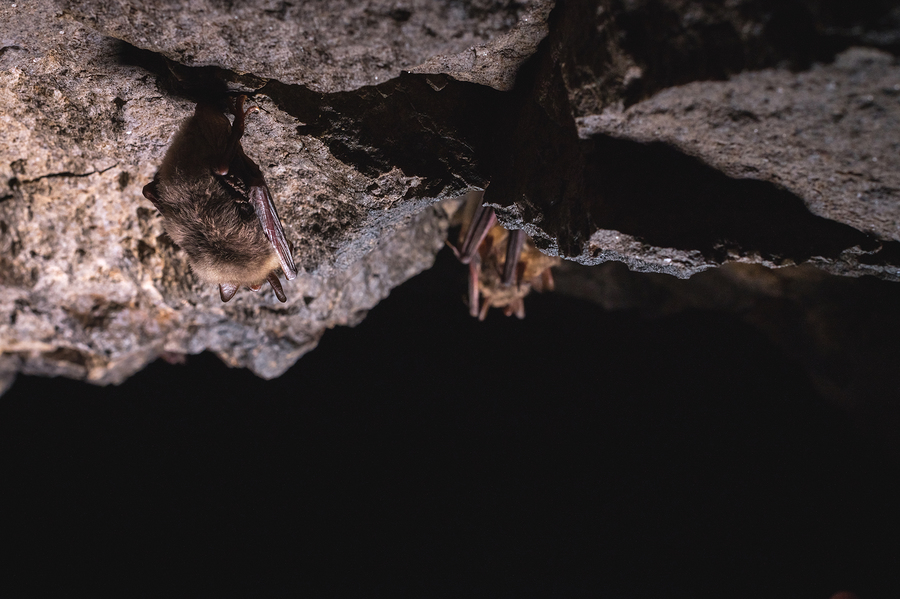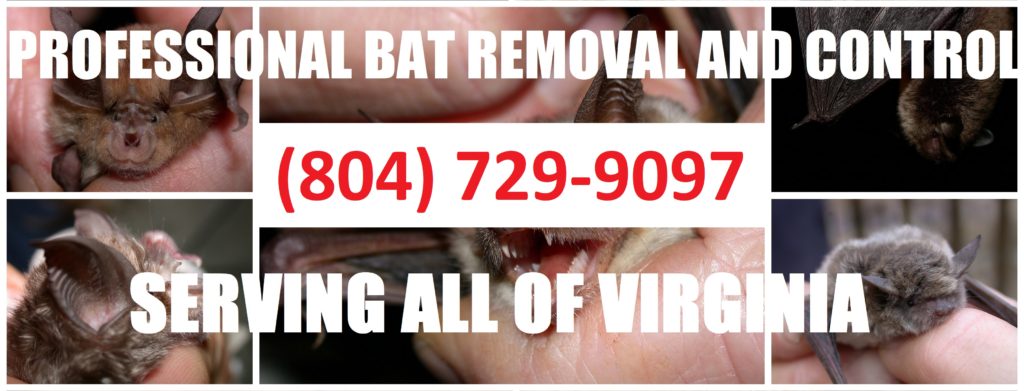The Virginia Big-Eared bat is one of three federally-listed endangered species of bat in Virginia. In fact, it has been categorized as endangered since 1979 by the US Fish and Wildlife Service. There are several interesting facts about the Virginia Big-Eared bat species, adding more reason to keep these precious critters protected and preserved.
Continue reading to learn more about the Virginia Big-Eared bat, and what to do if you suspect you are having nuisance bat issues around your property.

Corynorhinus townsendii virginianus
The Virginia Big-Eared bat is part of the Animalia kingdom, Chordata phylum, Mammalia class, and Chiroptera order. Their scientific name, Corynorhinus townsendii virginianus, is derived from their genus (Corynorhinus), species (C. townsendii), and subspecies (C. t. virginianus).
What They Look Like
This special species is distinguishable by its large ears, which can reach lengths of 2.5 centimeters or more. When resting, their ears reach back to half the length of their body! In addition to their most distinguishable trait, these mammals have long, soft, brown fur that ranges in shade depending on their age. Weighing and average of 7 to 12 grams (0.25 to 0.42 ounces), it is one of the largest Microchiroptera species in its range. With rounded muzzle and elongated nostrils, the Virginia Big-Eared bat can grow to 98 millimeters (3.85 inches) long by adult hood.
How They Act
The VBE bat usually mates in the fall and winter. Females actually store the male’s sperm until they begin ovulation, which generally occurs in late winter or early spring. Females have a gestation period of 3 months, and give birth to only one baby, called a “pup.” The pup stay with the mother for up to 8 weeks, in which time they are fully-developed and capable of flight. These bats generally roost in caves, where they also hibernate for the winter. Because they prefer it, they are mostly found in mountainous limestone caves surrounded by forest with oak and hickory trees.
Where They Live
Although they are called the Virginia Big-Eared bat, they are not just native to Virginia. They are also found in states like Kentucky and North Carolina. The Virginia Big-Eared bat species is not a migratory one; they stay in their caves all year, whether hibernating or not. They only leave to hunt for food at night, which they do with the help of their amazing sonar abilities called echolocation. Bats see quite well, opposed to common belief, and only use their echolocating abilities to better dart and dive for insects. They are nocturnal, so it also improves their night-time navigational skills.
Nuisance Bat Problems?
It is vital to contact a licensed bat control company for safe, humane, and non-lethal bat abatement services. You should never attempt to trap, touch, harm, or kill a bat under any circumstances. This is also important since you never know if it is a federally-protected species.
Virginia Bat Removal and Control Near You
Call Virginia Bat Pros at 804-729-9097 when you need prompt and professional Virginia bat removal and control you can afford. They serve all of Virginia, including Richmond, Petersburg, Short Pump, Lynchburg, Charlottesville, Norfolk, Chesapeake, Newport News, Virginia Beach, and all of their surrounding areas.

